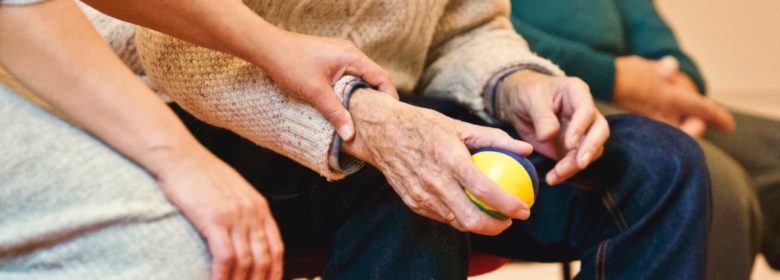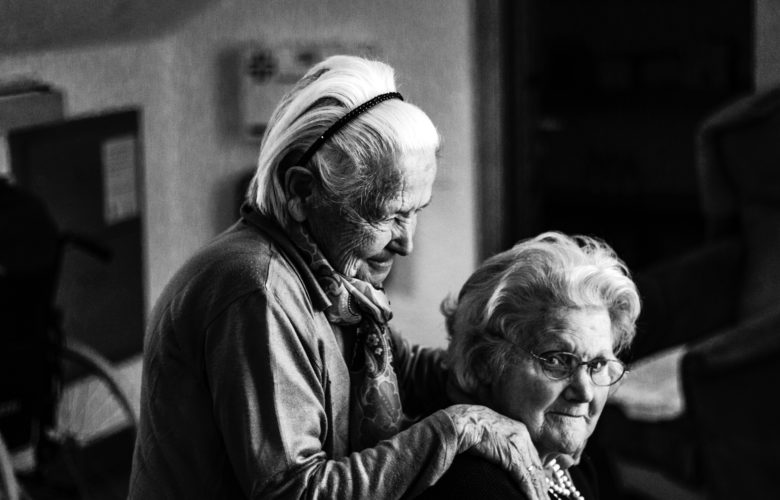Caring for the elderly at home
Rapid demographic ageing over the next ten years*
«[…] “The population aged 65 and over will increase markedly between 2020 and 2030, growing by nearly 30%. During this decade, the most numerous baby-boomer generations will progressively become senior citizens. The increase in the population aged 65 and over between 2018 and 2050 will be about 70%. This growth in the number of people of retirement age will be due not only to an increasingly large number of permanent residents reaching and exceeding 65, but also to the increase in life expectancy. By 2050, according to the reference scenario, Switzerland will count 2.7 million people aged 65 or more as against 1.6 million at the end of 2019.” […]»

Keeping seniors at home is a priority.
Several Swiss cantons have made keeping seniors at home a priority in order to avoid or delay as much as possible their placement in care homes. Looking after elderly people at home requires arrangements that are often unaffordable for landlords or the family. According to a broad study carried out in Switzerland (Age Report IV: Residence and ageing), it would appear that more than 66% of care home residents (aged 80+) in French-speaking Switzerland and over 73% of those in German-speaking Switzerland have an emergency call system, as against 12% (weighted average) of over-80s still living at home.
Given these figures, we would like to know and understand the constraints faced by seniors and their companions in setting up a safe environment for living at home. Care at home proves to be considerably more challenging if the person concerned has even mild cognitive impairment**, but may be essential for the person as their home represents a cocoon containing basic signposts for everyday life and thus allowing them to continue leading a “normal” life.
We went to visit an institution perfectly familiar with the limits and needs of people affected by cognitive impairment while still living at home.

Les Acacias : a day-care centre.
Les Acacias is a day-care centre that looks after people with cognitive impairment so as to extend their time at home for as long as possible in the best possible conditions (http://www.foyerlesacacias.ch).
The centre is in the heart of Martigny in Valais – one of the cantons encouraging care for the elderly in their own homes (Promotion of the health of the over-60s_Strategic orientation for the canton of Valais). Les Acacias is a place that offers security, comfort and conviviality to its patrons while providing supporting families with some respite and with daily assistance in dealing with the person affected by such impairment.
The Acacias team’s work takes place in the daytime and only rarely reaches out to patrons’ homes, therefore we wondered how care at home was arranged.
Catherine Poidevin-Girard, nurse educator and Director of the Acacias centre, welcomed us warmly to an exchange about the seniors’ safety at home so that we could learn about the challenges and the role we might play as the leading company for nurse call systems in Switzerland.
Life at home can be hazardous
Elderly people with cognitive impairment, as they age, risk encountering various health problems (heart trouble, stroke, memory loss). The risk of falls at home is higher, as is forgetting to eat in the case of people living alone.
Catherine Poidevin-Girard drew our attention to the need for a sort of ‘watch’ over people living alone at home to ensure that meals and medications are taken correctly.
Whether people live alone or with family, night is a time that is difficult to manage. They must be able to move around safely in the dark and to alert their companions when needed. Catherine Poidevin-Girard stressed that surveillance must be carefully adjusted so that the person can feel free to move around while receiving assistance in case of problems and without the family or companions being disturbed to no purpose in the middle of the night.
Maintaining a normal pattern of life enables such a person to go out as usual in a familiar and safe environment, which preserves a sense of well-being and basic contentment in an elderly person affected by this type of pathology. Nevertheless, these outings may be dangerous if the person becomes disoriented, or the person may leave the house too early in summer (confusion about daylight-saving time).
Making the homes of our seniors safe
While care homes and specialized institutions are fully equipped to manage elopement and supervision of elderly people, Catherine Poidevin-Girard confirmed that of the 30% of people visiting the Acacias regularly and living alone at home, very few have a safety system.
Alarm bracelets (the most common solution) do not seem sufficient to ensure the safety of elderly people at home: they may prove useful if the person is conscious and wishes to call for help without being in a life-threatening state, but when the person is unconscious bracelets are ineffective because no call for help is sent unless the main button is pressed.
In a long discussion with Catherine Poidevin-Girard on improving the safety of seniors’ homes, we came to the same conclusion: no complete ready-to-go safety system has been a clear success in Switzerland for elderly people living at home. Why? Catherine Poidevin-Girard explained that families are already so busy looking after their relative that they have little time for research and insufficient knowledge to compare one solution with another. The cost is often also a constraint.
Some joint thinking is needed to find an appropriate solution
The information provided by Catherine Poidevin-Girard and that emerging from a variety of research carried out by us leads us to believe that we could contribute to the maintenance of elderly people in their homes.
It is necessary now to think further and to invite all the actors in the field and the caring relatives to work on a common safety approach that could evolve over the years to accompany the people through the different stages of life in order to be able at all times to respond to their needs and keep them feeling SAFE at home.
*Federal Statistical Office (May 2020). Scénarios de l’évolution de la population de la Suisse et des cantons 2020-2050 [“Scenarios for the development of the population of Switzerland and its cantons 2020-2050”] (Embargo : 28.5.2020, 8h30). Found at : https://www.bfs.admin.ch/bfs/de/home/statistiken/bevoelkerung/alterung.assetdetail.12847545.html
**Anyone affected by Alzheimer’s disease or a related pathology (frontotemporal dementia, Lewy body dementia, vascular dementia, alcoholic dementia etc.) and living at home.